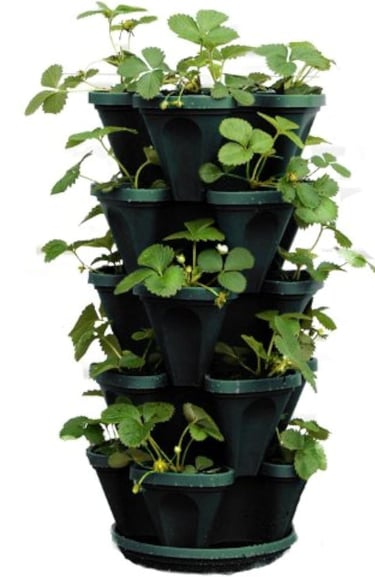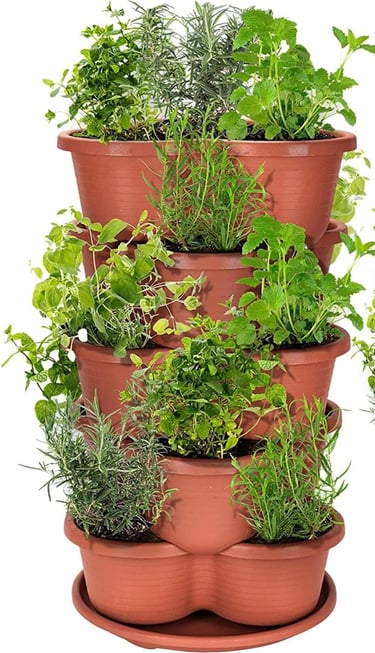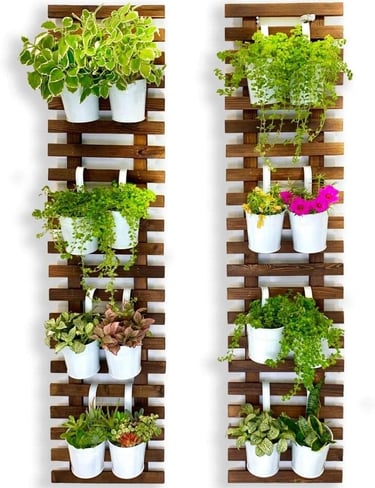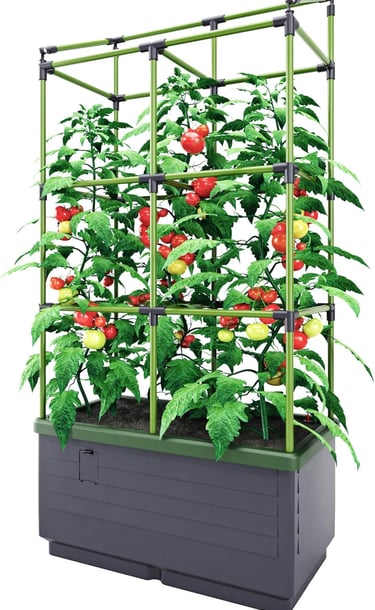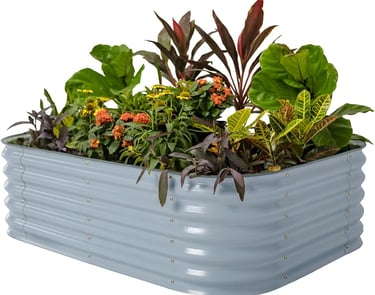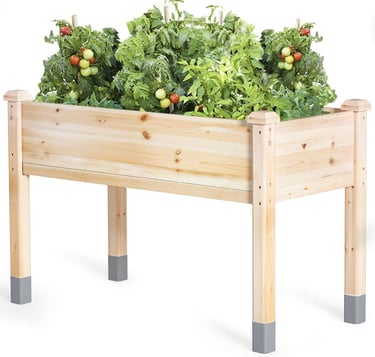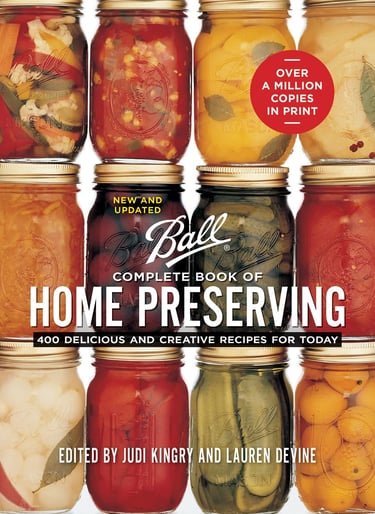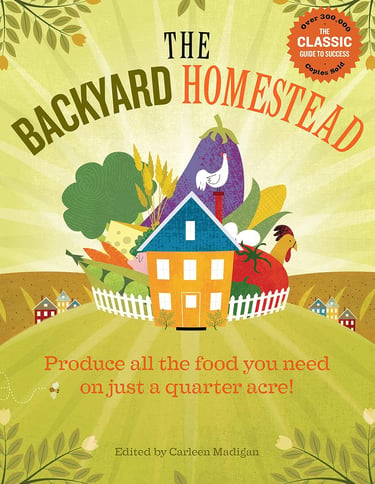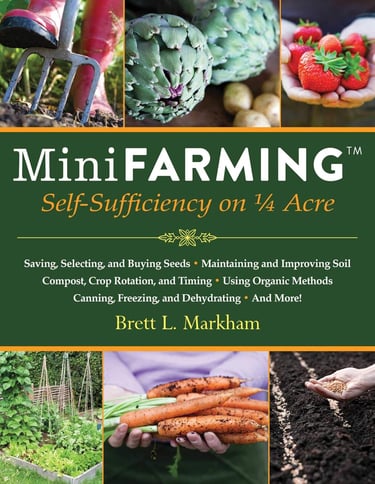Micro-Homesteading: How to Get Started on a Small Scale
Discover how to grow your own food with small space vegetable gardening techniques perfect for apartments, balconies, and tiny backyards.
Jiim
6/21/2025
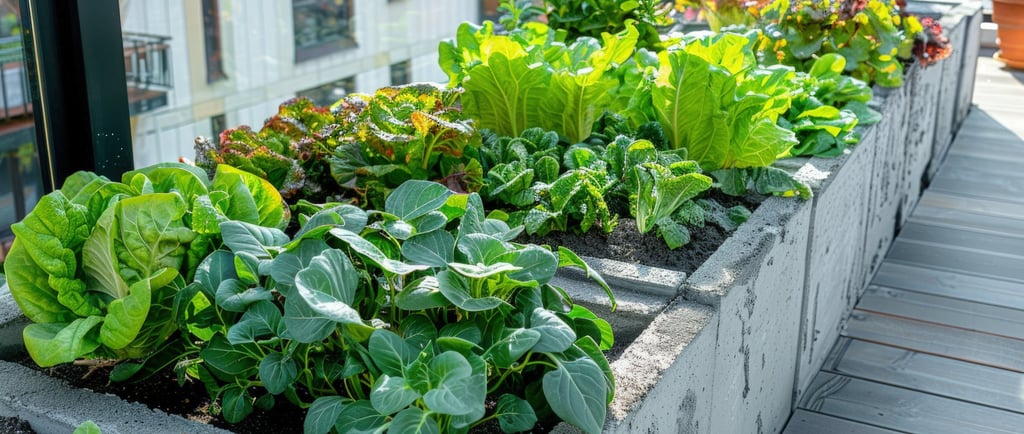

What Is Micro-Homesteading?
Micro-homesteading is the practice of living a more self-sufficient, sustainable lifestyle—right from a small plot of land, suburban backyard, or even an urban apartment. Unlike traditional homesteading, which often requires several acres, micro-homesteading focuses on maximizing the space you already have to grow food, reduce reliance on grocery stores, and reconnect with nature.
With food prices on the rise and more people craving independence and healthier living, micro-homesteading has become one of the fastest-growing trends in the modern homesteading movement.
Why Micro-Homesteading Is on the Rise
Food cost inflation is pushing people to grow their own produce.
Many are seeking greater control over what they eat.
It allows urban dwellers and renters to embrace sustainable living.
It encourages low-waste, off-grid habits like composting, preserving, and DIY skills.
Whether you live in a city, suburb, or on a rental property, micro-homesteading empowers you to live intentionally without needing acres of land.
Benefits of Micro-Homesteading
Grow your own organic vegetables and herbs
Save money on groceries
Gain independence from supply chains
Practice sustainability in your everyday life
Learn traditional skills like canning, fermenting, and natural cleaning
How to Start a Micro-Homestead (Step-by-Step)
1. Master Small Space Vegetable Gardening Techniques
Whether it's a windowsill herb garden, a few containers on a patio, or raised beds in your backyard, gardening is the foundation of micro-homesteading.
Tips:
Use vertical space with trellises and hanging baskets.
For small space vegetable gardening, see these Amazon Best Sellers for ideas. Click the image to view pricing on Amazon:
Grow high-yield crops like tomatoes, peppers, lettuce, and herbs. For a pdf list of 10 Easy Crops for Small Space Gardens with growing tips, sign up for our monthly newsletter below.
Invest in quality compost and soil amendments.
2. Learn How to Preserve Food at Home
You don’t need a full root cellar to store your harvest. Start with these beginner-friendly methods:
Canning: Store jams, sauces, pickles, and vegetables.
Dehydrating: Great for herbs, fruits, and jerky.
Freezing: Preserve seasonal produce with minimal equipment.
Below is an excellent resource book, a top seller on Amazon from Ball The book includes 400 innovative recipes for salsas, savory sauces, pickles, chutneys, relishes and, of course, jams, jellies and fruit spreads. You'll find comprehensive directions on safe canning and preserving methods plus lists of required equipment and utensils. Specific instructions for beginners and expert tips for the experienced home canner make this book a valuable addition to every kitchen library. Click icon below to find on Amazon.
3. Consider Raising Chickens in Your Backyard
If your zoning laws allow it, chickens or quail are great additions to a micro-homestead. They’re easy to care for and provide a regular supply of fresh eggs.
Urban alternatives for Small Backyards:
Bantam breeds for small yards
Indoor quail pens for tight spaces
4. Start Composting
You can compost in a small bin, tumbler, or even a countertop composter. This not only reduces kitchen waste but provides nutrient-rich soil for your plants.
Best composting methods for small spaces:
Worm composting (vermiculture)
Bokashi composting
Compost tumblers
5. Master DIY Skills
Part of the micro-homesteading lifestyle is becoming more self-reliant. Start with a few simple homesteading skills:
Baking your own bread
Making homemade cleaning products
Sewing and repairing clothes
DIY natural remedies
How Much Space Do You Need?
You can start a micro-homestead with as little as a balcony or backyard. The key is planning, resourcefulness, and a desire to make the most of every inch. Have only an apartment balcony? Grow herbs, tomatoes, microgreens and learn to compost. Do you have a small backyard? Raise chickens, have a raised bed garden or plant fruit trees. Have a larger suburban backyard? Add a full garden, chicken coop, compost bin and rain catchment.
Common Micro-Homesteading Mistakes to Avoid
Trying to do too much at once: Start small and expand gradually.
Ignoring local regulations: Check local laws on livestock and structures.
Overplanting: Choose crops that match your space and lifestyle.
Skipping the planning phase: Design your space for efficiency.
Tools and Resources to Get Started
Books:
The Backyard Homestead by Carleen Madigan (Click icons below to find on Amazon)
Mini Farming: Self-Sufficiency on 1/4 Acre by Brett Markham
Websites:
iwantahomestead.com – Your go-to resource
YouTube channels like Roots and Refuge, Epic Gardening
Apps:
Planter (garden planning)
From Seed to Spoon (gardening & harvest tracking)
Final Thoughts
Micro-homesteading is proof that you don’t need a farm to live a homesteader’s life. With a little creativity, resourcefulness, and dedication, you can grow your own food, reduce waste, and become more self-sufficient right where you are.
It’s not about perfection—it’s about progress.
Ready to Start Your Micro-Homestead?
We’d love to hear from you! Share your questions or success stories, or sign up for our newsletter for beginner tips, DIY projects, and seasonal growing guides.
Enter your Email Address below to subscribe to our Monthly Newsletter. Right now, if you sign up, we'll send you our "10 Easy Crops for Small Space Gardens" just for signing up.
MIXC Wooden Raised bed
Explore
Learn the basics of homesteading and hear from experts too
Connect
Learn
jimandmarie@iwantahomestead.com
© 2025. All rights reserved.
As an Amazon Associate I earn from qualifying purchases.

